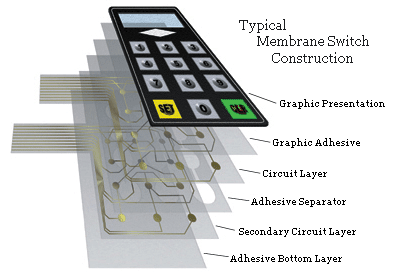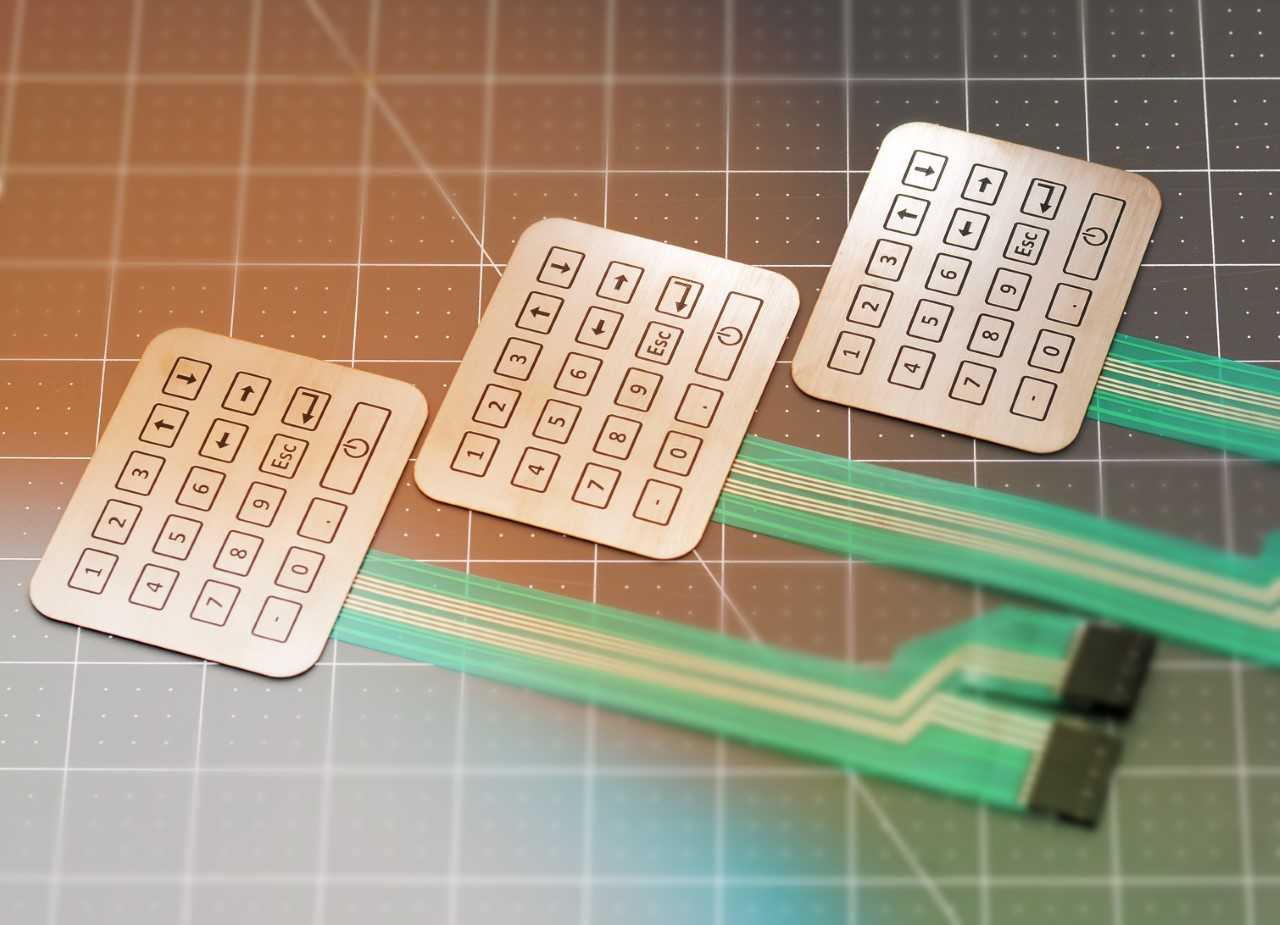Everything About Membrane Switch: Understanding Its Layout and Capability
When you think of the control user interfaces in modern tools, membrane layer switches frequently come to mind. These parts are much more than simply buttons; they blend design and performance perfectly. Comprehending exactly how they work and what makes them reliable can alter your viewpoint on daily electronics. Yet, there are subtleties to their layout and efficiency that you could not understand. Allow's discover what collections membrane switches apart from various other control systems.
What Are Membrane Layer Switches?

Membrane buttons can likewise be customized relating to shape, dimension, and graphics, permitting producers to produce unique interfaces tailored to particular products. In general, membrane layer switches play a significant duty in boosting individual experience across a vast selection of applications.
Just How Membrane Switches Over Work
When you press a secret on a membrane layer button, it triggers an uncomplicated yet effective system. membrane switch manufacturer. The leading layer, usually made of versatile product, presses down onto a conductive layer beneath it.
You'll discover that the responsive responses differs based on the button design, using either a soft click or an extra noticable feedback. Once you launch the key, the membrane go back to its initial placement, resuming the circuit and quiting the signal. This process happens nearly instantaneously, making certain a receptive customer experience.
Membrane layer switches are prominent due to their durability and resistance to dirt and wetness, making them excellent for various applications, from household devices to medical gadgets. Comprehending this operation aids you value their widespread use.
Secret Elements of Membrane Switches
Recognizing the essential components of membrane layer buttons is basic for understanding their performance and layout. The protective layer shields versus environmental factors and use, prolonging the switch's life-span. By comprehending these components, you'll acquire understanding right into just how membrane layer switches run and their significance in numerous applications.
Materials Used in Membrane Layer Switch Over Design
The performance and resilience of membrane changes greatly depend on the materials used in their style. You typically experience polyester and polycarbonate as key substratums because of their excellent toughness and adaptability. These products resist scratches and chemicals, making them suitable for requiring environments.
The conductive layers typically use silver or carbon, chosen for their reliability and conductivity. membrane switch manufacturer. Silver provides exceptional efficiency, while carbon is an economical option. For the overlay, you could think about a matte or shiny surface, relying on your visual requirements and user experience
Make particular to pick adhesives that hold up against ecological factors like temperature level and humidity. Selecting the appropriate products will guarantee your membrane button stands the examination of time.
Design Considerations for Membrane Buttons
While designing membrane buttons, it's essential to take right into account different variables that influence their performance and customer experience. Begin by concentrating on the layout and button dimension; make particular they're instinctive and very easy to navigate.
Validate your layout fits ecological variables, like dampness or temperature variations, which can affect performance. By carefully thinking about these aspects, you'll create a membrane button that improves use and complete satisfaction.
Applications of Membrane Buttons
Membrane buttons are flexible components discovered in numerous applications, from commercial tools to customer electronic devices. You'll see their effect in equipments that require resilient user interfaces and in devices that profit from smooth layouts. Comprehending these applications helps you appreciate the capability and practicality of membrane buttons in everyday modern technology.
Industrial Devices Use
When you're wanting to enhance the capability of industrial equipment, membrane switches use a trustworthy remedy that integrates toughness with easy to use style. These buttons are perfect for original site harsh environments, giving resistance to dust, moisture, and chemicals. You'll find them in control panels for making devices, cooling and heating systems, and medical tools, where accuracy and responsiveness are important. Their low account implies they fit perfectly into different equipment, saving beneficial space while keeping simplicity of use. With personalized graphics and backlighting choices, you can create an instinctive user interface for drivers, boosting efficiency and safety and security. Plus, their long lifespan decreases upkeep costs, making them a wise financial investment for your commercial applications. Welcome membrane buttons to streamline your operations and enhance overall efficiency.
Customer Electronics Assimilation
In the domain of customer electronics, membrane switches play an essential duty in boosting user interaction and tool capability. You'll discover them in gadgets like microwaves, push-button controls, and video gaming consoles, providing a smooth method to communicate with modern technology. Their sleek style permits easy integration right into numerous items, making i thought about this controls user-friendly and straightforward. With their ability to incorporate graphics and backlighting, you can enjoy a modern visual that matches the gadget's general look. Membrane layer buttons likewise ensure toughness and resistance to dirt and wetness, prolonging the life-span of your electronics. By picking membrane layer switches, click you improve not just the performance but likewise the design of your gadgets, making everyday interactions smooth and enjoyable.
Benefits and Downsides of Membrane Layer Buttons
While membrane buttons offer a variety of advantages, they likewise come with some disadvantages that you should think about. One considerable advantage is their small style, making them ideal for space-constrained applications.

However, there are downsides. Membrane switches can have a shorter life-span contrasted to mechanical switches, specifically under heavy use. They can likewise be less tactile, which may impact user comments throughout procedure. If damaged, fixing them can be difficult and typically calls for complete replacement. Ultimately, their sensitivity to extreme temperature levels and environmental problems may limit their efficiency in particular settings. Stabilizing these benefits and drawbacks will aid you determine if membrane buttons are the best fit for your project.
Often Asked Questions
How Much Time Do Membrane Layer Switches Usually Last?
Membrane changes generally last in between 5 to 10 years, relying on use and environmental problems. You'll intend to review factors like wear, direct exposure to moisture, and temperature level variations to assess their long life efficiently.
Can Membrane Changes Be Customized for Particular Layouts?
Yes, you can personalize membrane layer switches to fit certain layouts (membrane switch manufacturer). You'll have the freedom to select colors, forms, and formats that match your project's demands, ensuring they mix perfectly with your total visual
What Is the Price Range for Membrane Layer Switch Over Production?
The expense range for membrane layer switch production generally drops between $1 and $10 each, relying on aspects like style intricacy, amount, and products. You can obtain quotes from makers to discover the most effective alternative.

Are Membrane Layer Switches Over Water Resistant or Immune?
Membrane switches can be made to be waterproof or resistant, depending on products utilized and building and construction approaches. If you require them for damp atmospheres, guarantee you define those needs throughout the layout process.
Exactly How Do Membrane Switches Over Contrast to Typical Switches?
Membrane switches are usually thinner and a lot more flexible than traditional switches, offering a smooth design. They're often less complicated to clean up and integrate, yet could not provide the tactile feedback you're utilized to with mechanical alternatives.
Conclusion
